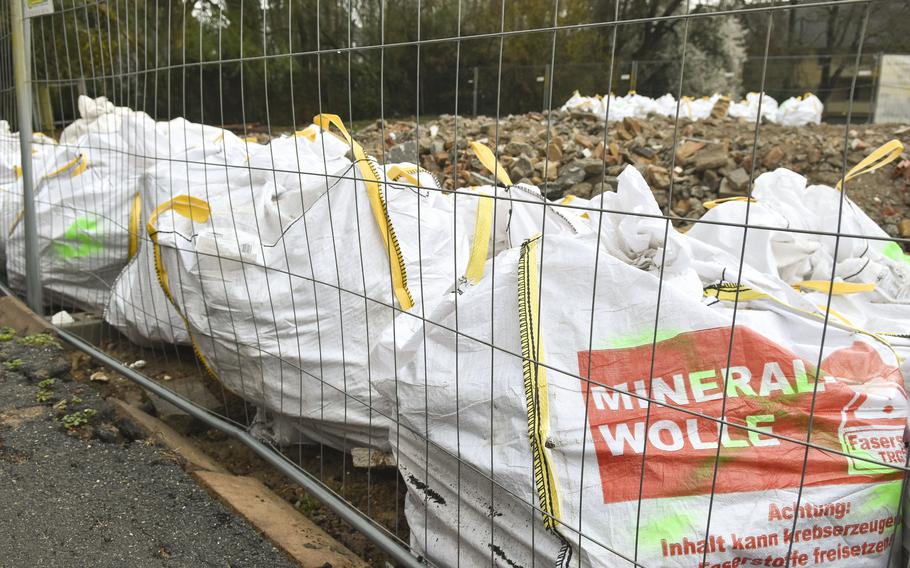
Construction waste bags line the perimeter of a building demolition area in the Army's Crestview neighborhood in Wiesbaden, Germany, on March 11, 2024. (Bradley Latham/Stars and Stripes)
WIESBADEN, Germany — Demolition work involving several residential buildings in the Army’s Crestview neighborhood includes a dose of asbestos mitigation, as borne out by the trash bags spotted recently by some folks living in service-owned residences there.
Asbestos was once common in industrial and commercial projects as a result of its durability and heat-resistant properties. But it has long been banned from building projects in the United States and Europe; inhaling its microscopic fibers creates a risk of diseases such as lung cancer, asbestosis and mesothelioma.
Appropriate mitigation measures are being taken during demolition of the buildings, which date from the 1950s.
“The bags you see onsite are the final, third layer of containment used for transporting any material found to the proper disposal site,” garrison spokeswoman Audra Calloway said Monday.
The garrison plans to turn the sites into parking lots for neighborhood residents. Traffic and congestion have become a problem at Crestview since family housing units were converted into living spaces for single soldiers.
Options for green space and recreation areas are also under consideration, garrison commander Col. David Mayfield said during a recent community meeting.
The approximately $2 million project in the off-base military housing community began in late fall.
Contractors have already demolished one of seven buildings in the project. The command expects the Crestview demolition work to be finished by September.
Crestview has housed unmarried soldiers for many years, but an influx that began in the summer of 2021 with barracks improvements has continued. Approximately 120 families and 250 single service members live in the neighborhood now.
Asbestos inhalation is generally not a concern unless the material is disturbed and becomes airborne during activities such as sanding, renovation or construction.
The substance was used extensively in Germany from the early 20th century until a 1993 ban, according to Federal Institute for Occupational Safety and Health.
Two other buildings, one in Crestview and one in the Aukamm neighborhood, also were slated to be torn down, but budget constraints curtailed their demolition, Calloway said.